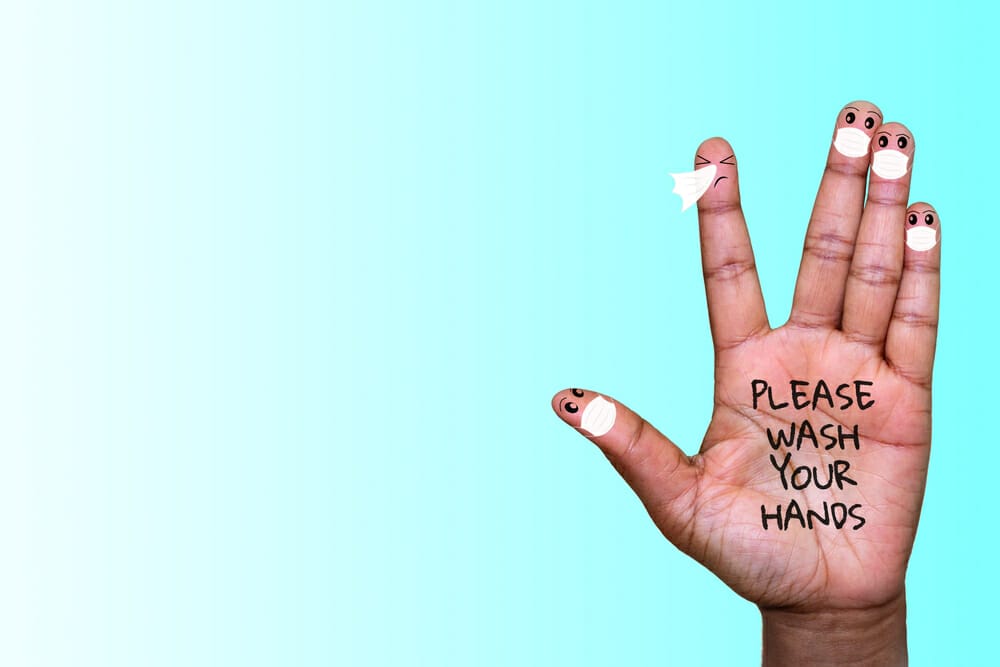100 days ago, no one knew that SARS-CoV-2 existed. Now, the virus has been identified in almost every country, infecting at least over 1 million people whom we know about, and many more whom we do not. Its related effects have crushed economies and broken or severely tested health-care systems, filled hospitals and emptied public spaces. It has separated people from their workplaces, families and their friends. It has disrupted society on a scale that most living people have never witnessed. It has also promoted a wide range of alternative explanations (conspiracy theories abound) and pulled together an array of national scientific institutions into a collective sharing of knowledge never seen in a lifetime. The world will likely follow a different trajectory post corona.
More transmissible and fatal than seasonal influenza, the new coronavirus is also stealthier, spreading from one host to another for several days before triggering obvious symptoms.
As we move into the Easter holiday lockdown period, and for many families, out of the new homeschooling routine, we are all challenged again by the reality that we cannot travel as usual during the Easter break. Seeing family, friends, evenings in the pub, a National Trust garden, the beach, coastal paths, national parks, a trip to somewhere sunny, all are off-limits for the time being. For those of us lucky enough to have an outdoor space, this remains perhaps the only solace when the sun shines.
Some European countries are considering moving to a post-lockdown phase as soon as mid-April and cautiously considering how to do this with limited movement and gradual reopening of public spaces. It is difficult to imagine how this will work and avoid a significant risk of infection rates climbing but at least a glimmer of hope that there is an end in sight.
It is also hoped and trusted that the changes to legislation required by governments (including our own) to enact the recent changes to societies around the world, will be for a limited time, and not result in fundamental changes to existing liberties. Unfortunately, in countries with weak democratic institutions, this expansion of state power is already being used as an excuse to entrench autocracy, as has occurred in Russia, Hungary and the Philippines.
Looking to the future is an inevitable thought and a conversation that we are all having, a highly speculative endeavour, and not one that many feel comfortable undertaking. Pandemics have so many factors to consider, national and regional variations in culture, politics, economies, geography, health systems and priorities, that it feels a little overwhelming, and at the end of the day, nobody knows yet what may work.
However, we have picked out some recent articles that attempt to look at what the future might hold in the long term and the way we might start to think about the world beyond this initial phase of the crisis.

How will we know when we’re through this?
Larry Brilliant an expert on pandemics thinks that the world will start to look and feel more normal once three specific things have happened.
- We figure out what the real scale and spread of the virus are “If we’re only seeing right now one-seventh of the actual disease because we’re not testing enough, and we’re just blind to it, then we’re in a world of hurt.“
- We have a treatment that works, a vaccine or antiviral.
- We begin to see large numbers of people—in particular key workers who have had the disease—are immune, and we have tested them to know that they are not infectious any longer and we have a system that identifies them (immunity passports). “Then we can be comfortable sending our children back to school because we know the teacher is not infectious.”
Full interview here
Three different scenarios
An article by Ed Yong in The Atlantic focuses on the US situation predicting that the outcome could be the worst for any country in the world, but the scenarios apply to all.
The first is that every nation manages to simultaneously bring the virus to heel, as with the original SARS in 2003. Given how widespread the coronavirus pandemic is, and how badly many countries are faring, the odds of worldwide synchronous control seem vanishingly small.” Agreed. This seems highly unlikely given the current trend and data or lack of it either through limited testing and or published national data.
The second is the “herd immunity” scenario which could be quick but would come at a significant number of lives lost. SARS-CoV-2 is currently seen as more transmissible and fatal than the flu, and it would likely leave behind many millions dead and devastated health systems.
The third scenario is that the virus is stamped out here and there until a vaccine can be produced. With a variety of travel restriction policies and significant testing strategies. This seems to be the best option, but also the longest, economically painful and most complicated.
Whether through accumulating herd immunity or the long-awaited arrival of a vaccine, the virus will find spreading explosively more and more difficult. It’s unlikely to disappear entirely. The vaccine may need to be updated as the virus changes, and people may need to get revaccinated regularly, as they currently do for the flu……COVID-19 may become like the flu is today—a recurring scourge of winter. Perhaps it will eventually become so mundane that even though a vaccine exists, large swaths of Gen C (COVID-19) won’t bother getting it, forgetting how dramatically their world was moulded by its absence.

The cultural impact
Charles Eisenstein recent essay entitled “The Coronation” covers a huge range of points and interesting insights.
He proposes that social distancing to some extent may be here to stay. With the possibility of new viruses, emergency measure perhaps feeling normal to us, and reinfection unknown but possible, over 12 – 18 months this could become the new normal.
Another more popular point, also made by others is why we are taking such extreme action when we have been paralysed by inaction around crisis such as world hunger, addiction, autoimmunity, suicide, or ecological collapse. He goes on to say;
It is a crisis for which control works: quarantines, lockdowns, isolation, hand-washing; control of movement, control of information, control of our bodies. That makes COVID a convenient receptacle for our inchoate fears, a place to channel our growing sense of helplessness in the face of the changes overtaking the world. COVID-19 is a threat that we know how to meet. Unlike so many of our other fears, COVID-19 offers a plan.
Some positive cultural impacts may arise out of the crisis if we seize the moment, and he is not the only commentator to note that when we are united in common cause, rapid change is possible.
None of the world’s problems is technically difficult to solve; they originate in human disagreement. In coherency, humanity’s creative powers are boundless. A few months ago, a proposal to halt commercial air travel would have seemed preposterous. Likewise, for the radical changes, we are making in our social behaviour, economy, and the role of government in our lives. COVID demonstrates the power of our collective will when we agree on what is important. What else might we achieve, incoherency? What do we want to achieve, and what world shall we create? That is always the next question when anyone awakens to their power.
Interestingly in terms of our ability to learn and evolve our understanding of how to manage outbreaks in the future with huge populations and overcrowded urban environments, we will need to adapt. It appears that the SARs experience has taught much to the South Asian countries, so careful dissection of the crisis will need to be undertaken with as honest and candid analysis as possible, but perhaps Mr Eisenstein is correct with his prediction and we will continue to argue along the lines of the below about recent events in years to come.
In the face of the uncertainty, I’d like to make a prediction: The crisis will play out so that we never will know. If the final death tally, which will itself be the subject of dispute, is lower than feared, some will say that is because the controls worked. Others will say it is because the disease wasn’t as dangerous as we were told.
Resources and other interesting articles:
https://nutritioninfocus.clinicaleducation.org/keeping-your-immune-system-on-guard/ and https://elemental.medium.com/this-is-how-your-immune-system-reacts-to-coronavirus-cbf5271e530e – Some interesting information on immunity
https://theana.org/COVID-19 – Prepared by the Personalized Nutrition & COVID-19 Task Force of the American Nutrition Association
https://thorax.bmj.com/content/70/7/617 – Vitamin D deficiency contributes directly to the acute respiratory distress syndrome (ARDS)
https://members.tortoisemedia.com/wp-content/uploads/sites/3/pugpig-api/ad_bundles/134482/covid19_tracker/index.html and https://blog.nutrigold.co.uk/2020/03/26/coronavirus-self-isolation-and-community/ – some illuminating facts and figures







